Kia Niro EV Vs Niro PHEV Comparison

It's a question we get asked all the time: EV or PHEV? With the Kia Niro, the answer is yes.
We get the appeal of both, we do. On the pure-electric front, there's a simplicity of use, and the quiet of that near-silent drivetrain. But the current ranges of battery electric vehicles aren't for everyone—and not everyone can easily charge at home. That's where the more complicated plug-in hybrid electric vehicles (PHEVs) start to make sense. Enough juice to handle most daily activities without ever waking the gas powerplant, but the latter eliminates any range anxiety.
Not many cars offer both approaches, but Kia's Niro does. Entering its second generation for 2023, the Niro once again comes in three flavors; a regular hybrid is also available. During the annual Automobile Journalists Association of Canada (AJAC) EcoRun last month, we got the opportunity to stick these two together for a bit of a sibling rivalry. Which one is our pick? Read on for the full verdict.
Interior and Cargo Space
Measurement | 2023 Kia Niro EV | 2023 Kia Niro PHEV |
|---|---|---|
Front headroom | 40.5 in / 1,029 mm | 40.5 in / 1,029 mm |
Front legroom | 41.5 in / 1,054 mm | 41.5 in / 1,054 mm |
Rear headroom | 38.1 in / 967 mm | 39.6 in / 1,005 mm |
Rear legroom | 36.9 in / 938 mm | 39.8 in / 1,011 mm |
Cargo space behind 2nd row | 22.8 cu-ft / 646 L | 19.4 cu-ft / 549 L |
Cargo space behind 1st row | 63.7 cu-ft / 1,804 L | 54.6 / 1,546 L |
Niro EV: Both of these cabins are, unsurprisingly, very similar. Kia has been on a techy, futuristic bent for the last few years, and that generally translates very well to the sub-compact Niro. The angular dashboard design, dominated by the asymmetrical twin-screen setup, looks sharp, and we enjoy the use of subtle textures here to elevate the space.
The good vibes stick around so long as you're looking dead-ahead. Peer down to the center console and while it's well-stocked with physical buttons and a knurled-finish rotary drive selector, there's a sea of shiny piano black plastic to contend with. The door panels are even more egregious, with huge, unbroken swaths of the stuff. It takes a bit of the air out of the Niro EV's appeal.
I say only a bit, though, because this is still an airy cabin, with lots of headroom up front and clear sightlines out. Front-seat passengers enjoy 40.5 inches (1,029 millimeters) of headroom, and legroom is 41.5 in (1,054 mm). Backseat accommodations are compromised because of the underfloor battery pack, but you're still looking at 38.1 in (967 mm) and 36.9 in (938 mm), respectively. That's close to what you'll find in SUVs the next size up.
The Niro EV's got a capacious 22.8 cubic feet (646 liters) of storage space with all the seats up, beating its bi-powered sibling. There is a catch, however: the load floor is lower, so there's a noticeable dip from the load lip, and the seats don't fold flat in-line with the floor. Still, in two-seat form there's 63.7 cu-ft (1,804 L), which is enormous for something so small.
Niro PHEV: Visually, there's not much separating the PHEV from its exclusively-electrons sibling. The dashboard design is the same, the center console is the same—except a few buttons, more on that later—and the seats are... oh, wait a minute. The PHEV goes for a combo of Kia's synthetic leather along with some cloth inserts, instead of solely the former in the EV. Part of this has to do with the trim differences here: our Canadian-spec testers are a PHEV EX (the only trim available in Canada), and the EV Limited (equivalent to Wave in the US). Personally, I prefer the cloth inserts, though they don't come with the available ventilation found in the EV.
Going by the official figures, front-seat space in the PHEV is identical to the EV. That's odd though, as the PHEV doesn't have a sunroof. Without the underfloor battery pack, the PHEV has even better rear occupant digs, with a very generous 39.6 inches (1,005 mm) of headroom and 39.8 (1,011 mm) of legroom.
PHEV buyers pay for that passenger space with a tighter cargo hold, however. With a higher load floor to handle the PHEV's own battery pack, not to mention a cover on the passenger-side cubby, you're looking at 19.4 cubic feet (549 L) with all seats up. Drop the back row and the flat space measures 54.6 cu-ft (1,546 L).
Bottom Line: Sure enough, there isn't much between these two. Outside of the seat materials, the choice is a matter of priority: if you need passenger space, the PHEV has the advantage; when it's cargo, the EV is king.
Kia Niro EV vs PHEV: Tech and Features
Niro EV: This is the top Niro EV trim, dubbed Limited in Canada and Wave in the US. That affords it with a few key advantages over its sibling. Both models get such niceties as the 10.25-inch central touchscreen, heated front seats, and five USB ports. Only the EV offers additional goodies like the head-up display, front ventilated seats, rear heated seats, power-adjustable front row seats, power tailgate, a Harman Kardon sound system, and more. Some of these features are available on the PHEV's higher SX Touring trim in the US, but Canada sticks to just the EX.
The EV also gets the advantage of vehicle-to-load (V2L) functionality, allowing owners to charge accessories via the car's charge port with the proper adapter. Neat!
The Kia infotainment system is a solid, straight-forward bit of kit to use. Our criticisms here have been the same ones for a while now: the color scheme looks cool, but combined with the font choice, makes the system harder to operate in your peripheral vision. Get used to the system however, and it's quick to respond and offers plenty of personalization choices.
Niro PHEV: As we covered above, this particular PHEV is an EX trim, Kia's traditional mid-packer. It lacks lots of the goodies of its electric sibling, some of which, like a power-adjustable seat, seem almost punitive in a $35,000 ($40,000 CAD) car. Others, like the ventilated seats and upgraded sound system, are less essential, at least in our eyes.
On the other hand, the essentials are all present and accounted for. The central touchscreen is the same solid unit with integrated navigation, and while the customizable portion of the instrument panel is much smaller, the functionality is nearly the same.
Neither Niro skimps on safety, either. Automated emergency braking now includes junction turning detection, and both models include lane keep/centering, blind spot monitoring, rear cross-traffic alert, adaptive cruise control with Highway Drive Assist (HDA), and auto headlights. The EV does get HDA2 instead, but we find both versions of the Level 2 system very smooth. Opting for the PHEV also sacrifices the smart park assist and front parking sensors.
Bottom Line: The pricier EV comes with more features. In similar news, Jupiter is indeed larger than Earth. The PHEV doesn't feel miserly considering its price, except for the fully manual driver's seat.
Powertrain, Driving Feel, and Efficiency
2023 Kia Niro EV | 2023 Kia Niro PHEV | |
|---|---|---|
Engine/Motor | 1 x electric motor, 64.8-kWh battery | 1.6L I4, 1 x electric motor, 11.1-kWh battery |
Output | 201 hp, 188 lb-ft | 180 hp, 195 lb-ft |
Transmission | 1AT, FWD | 6AT, FWD |
US Energy Efficiency (combined) | 113 MPGe | 108 MPGe |
CAD Energy Efficiency (combined) | 2.1 Le/100 km | 2.1 Le/100 km |
Electric Range | 253 mi / 407 km | 33 mi / 55 km |
Total Range (combined) | 253 mi / 407 km | 519 mi / 835 km |
Niro EV: Kia has massaged the previous-gen Niro EV's powertrain for this second act. Battery capacity is a healthy 64.8 kilowatt-hours, with one electric motor on the front axle drawing power. Official figures are 201 horsepower and 180 pound-feet of torque.
On the road, the EV excels at everyday tasks. It's not abruptly quick like most modern EVs—blame the comparatively mild torque figure—but that's a positive in our eyes. It's easy to be smooth with the EV, and that smoothness is key if you want to hit the 253 miles (407 kilometers) of range on a single charge. Speaking of, the EV doesn't get the E-GMP quick-charge setup, capping at 85 kW on a DC source, which should get the battery back to 80-percent state of charge (SoC) in about 45 minutes.
Naturally, the EV is quiet on the road, and it rides with a softness that makes it clear comfort is king. Large bumps send a lot of noise into the cabin, however, particularly from the rear axle. The steering is clean and light, and the brake pedal feel is natural. There are multiple regenerative braking options, and the most aggressive turns the Niro EV into a genuine one-pedal experience.
Niro PHEV: In an unexpected switch, the PHEV is the torquier choice here. This plug-in Niro runs an efficient 1.6-liter inline four alongside a 62-kW electric motor, with combined outputs of 180 hp and 195 lb-ft of torque. The motor pulls from an 11.1-kWh battery pack; play your cards right, and it'll do 33 miles (55 km) on nothing but battery power.
Like the EV, the Niro PHEV is a front-drive-only affair. It utilizes a six-speed automatic gearbox, which performs well in all conditions. With several hundred less pounds to haul around, the Niro PHEV feels quicker off the line than the sedate EV. The advantage tapers off at highway speeds, where the PHEV needs to rev up for passing maneuvers, upsetting the calm. It rides with a similar softness to the EV, though the lighter curb weight allows it to settle quicker after large bumps. The smaller 16-inch alloy wheels help too, absorbing smaller disturbances with those squishy sidewalls.
As you'd expect, the plug-in has the range advantage, with an estimated range just shy of 520 miles (835 km). Being able to pick and choose where to use the electric motor is handy for daily errands, as well. The drawback is charge time: the Niro PHEV needs 165 minutes to recharge its battery on a Level 2 setup.
Bottom Line: Both of these Niros offer a grown-up driving experience, and one that prioritizes comfort over pretend sportiness. As much as we enjoy the quiet of the EV, it's the lighter PHEV that has the better balance.
Kia Niro EV vs PHEV: Styling
Niro EV: The funky Niro redesign is at its funkiest on the EV. The geometric pattern in the high-mount grille is mirrored in the air intake below, and the former has a unique shape thanks to the center-mount charge port. Going all-electric means ditching any pretence of off-roading with a smoother lower lip design, too. This specific EV dips its Audi R8-like side blade in a metallic silver, which is only offered with the Snow White paint; every other trim is black. The silver extends to the wheel arches and lower door trim as well. We dig the ultra-thin taillights, and the more subtle rear bumper design.
Niro PHEV: Kia's stylists have made a handful of tweaks to set the different Niros apart. The PHEV's upper grille trim extends right to the fender shut line, for example. There's a quasi bash-plate look to the front bumper too; don't take that as an invite to off-road this thing though. This EX model features matte black plastic for its contrast trim pieces, which does look a little low-rent compared to the metallic finish found on the EV. The little 16-inch alloys can look a little lost under the body too, but we like their design more than the 17s on the EV.
Bottom Line: Is the Niro unusual? Oh, absolutely. But we applaud Kia for getting adventurous after the forgettable look of the original Niro. Which you prefer out of these two is almost academic: whether you like the overall shape matters more.
Pricing and Value
2023 Kia Niro EV | 2023 Kia Niro PHEV | |
|---|---|---|
Starting Price (USD) | $40,875 | $35,165 |
As-Tested Price (USD) | $47,765 | $35,165 |
Starting Price (CAD) | $46,845 | $39,845 |
As-Tested Price (CAD) | $55,095 | $40,095 |
Niro EV: In America, the Niro EV kicks off at $40,875, including destination. That nets buyers the Wind. This tester is equivalent to the Wave, which adds $5,000 to the bottom line. Both models have the same drivetrain; what matters are the creature comforts, as well as some visual tweaks.
In Canada there are three trims, with the $46,845 CAD Premium and $54,845 CAD Limited bookending the lineup. There's also the Premium+ at $49,845 CAD. It's important to note that our Can-spec Limited includes a heat pump as standard, which is optional in the US.
As equipped, our tester rings in at $47,765 ($55,095 CAD) before any incentives.
Niro PHEV: In America you've got two plug-in choices: $35,165 EX, or $40,915 SX Touring. The SX Touring significantly closes the feature gap in this comparison, adding in a power tailgate, HK audio, ventilated front seats, and more. It also adopts 18-inch alloys, though there's no official drop in electric range because of them.
Canada just sticks to the Niro PHEV EX, ringing in at $39,845 CAD including destination. Our tester has an extra $250 CAD on its window sticker for the Mineral Blue paint; that's a no-cost option in the US.
Bottom Line: No doubt about it, the PHEV is the more affordable option. That's compounded by the trim variance here, but even like-for-like, the PHEV saves its buyers a couple thousand, at least at the dealership.
Kia Niro EV vs Kia Niro PHEV: Verdict
It's always great to get to test two different drivetrains in the same car, together. It allows the differences to boil to the surface, and potentially confirm any sneaking suspicions one might've had beforehand.
That's exactly what happened here. When we first drove the 2023 Kia Niro late last year, it was in regular hybrid and EV forms. We thought the PHEV might be the Goldilocks of the lineup, and this drive in British Columbia confirmed it. The PHEV is nicer to drive at anything less than highway passing speeds, and it massively undercuts its all-electric sibling. Sure, we wish Canada would offer an additional, well-stocked trim like the US. But even without that, in the face-off that is Kia Niro EV versus Niro PHEV, it's the PHEV that earns the nod.
Become an AutoGuide insider. Get the latest from the automotive world first by subscribing to our newsletter here.

Kyle began his automotive obsession before he even started school, courtesy of a remote control Porsche and various LEGO sets. He later studied advertising and graphic design at Humber College, which led him to writing about cars (both real and digital). He is now a proud member of the Automobile Journalists Association of Canada (AJAC), where he was the Journalist of the Year runner-up for 2021.
More by Kyle Patrick



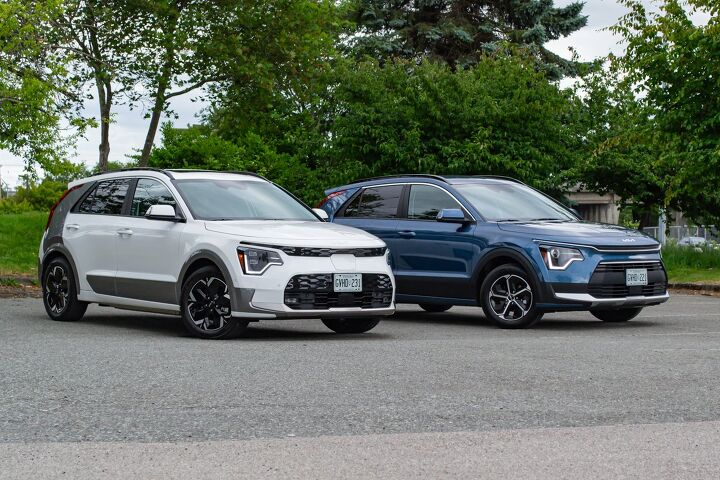
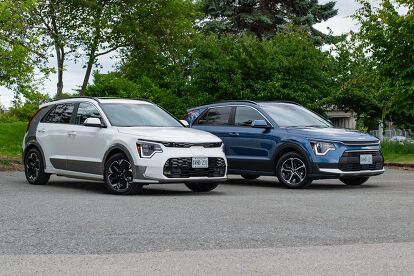






















































































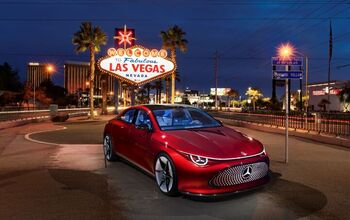
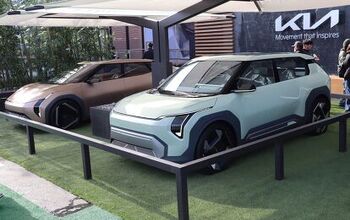
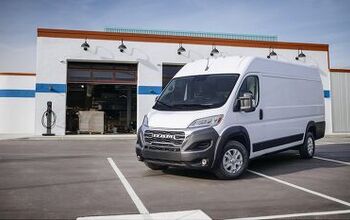







Comments
Join the conversation